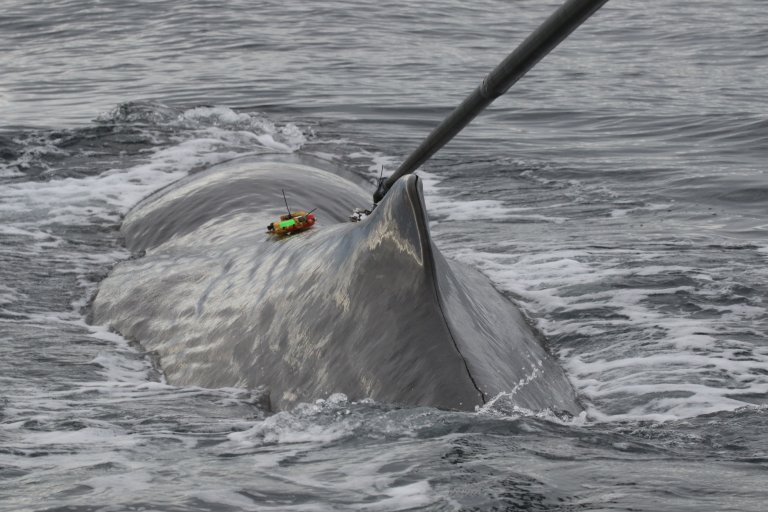Whale marking is extreme
The light boat is flying over the swells outside Andenes. The dark, large shadow ahead will soon break the surface. This is it.
The man with the long boom has less than ten seconds from the sperm whale surfaces, blows and again disappears into the sea.
This is however nothing out of the ordinary for the field biologist. He has done this before. His movements are confident. The suction cup sensor attaches exactly where it is supposed to.
In less than 24 hours, the sensor will reemerge, emitting a radio signal that allows the researchers to locate it. During these hours, however, the sensor will have recorded the animals’ behavior before, during and after exposure to the sonar sound signals.
Researchers from seven countries
The military frigates have sonars that may track submarines several miles away. How might these sonar signals affect the whales?
Researchers from seven countries were in northern Norway last autumn, in order to study how the large mammals react. The first research reports from the cruise have now been published.
This fourth expedition concludes the third phase of the international research collaboration on whales and military sonar, reports FFI. Various whale species along the Norwegian coast have been marked with transmitters that have provided useful information on how the animals react to the sonar sound. The aim of the research is to obtain guidelines for sonar use that minimise the effect on the marine environment.
Marked with suction cup
The researchers located the animals and marked them with the sensors. Fifteen sperm whales and five humpback whales were tagged. The researchers thus collected 355 hours of data from the units, and conducted eleven sonar experiments. The results will now be further examined.
Both the FFI research vessel “H.U. Sverdrup II” and the Norwegian frigate “KNM Otto Sverdrup” participated in the research cruise, which took place in August and September last year. Before the cruise, a separate risk assessment was conducted, in order to reduce the risk of negative effects on fishing and whale watching.
Different reactions
FFI has now published the report “Studying the effect of source proximity in sperm whales and the effect of continuous sonar in pilot whales using operational sonars” (see above).
FFI researcher Petter Kvadsheim says that similar studies have been conducted on sperm whales previously. The results indicate that the species do respond to military sonars.
"Usually, they interrupt their diving and graze less during the sonar activity. Unlike a number of other whale species, however, sperm whales do not react by moving away from the area. They normally their resume behaviour patterns fairly quickly after the sonar signals are gone."
